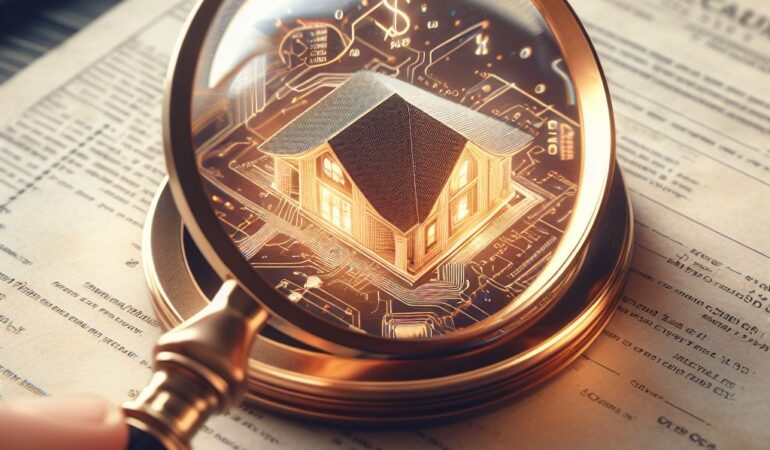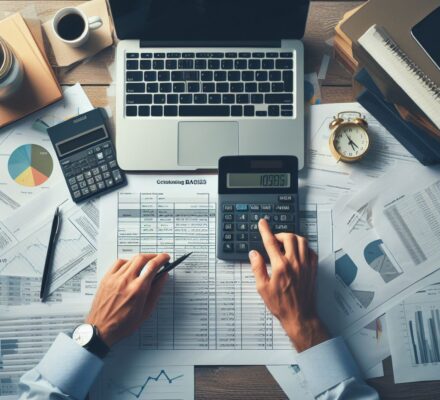Looking to maximize your tax savings? Want to understand the ins and outs of the 1031 exchange process?
With our comprehensive guide, you’ll master the art of determining the basis for your property exchange. How can you identify the adjusted basis of your relinquished property? How do you calculate the basis of your replacement property?
We’ll break it down for you, along with tips for making the most of your tax savings.
Get ready to become a tax-saving pro!
Key Takeaways
- The 1031 exchange process allows for deferring capital gains tax on the sale of investment property.
- The adjusted basis of the relinquished property is determined by calculating the original purchase price, adding settlement costs and improvements, and factoring in depreciation.
- The basis of the replacement property is determined by its purchase price, including assumed liabilities or mortgages, and accounting for expenses and improvements.
- Improvements made to the replacement property can increase its basis, and depreciation recapture should be considered when selling a property for more than its adjusted basis.
Understanding the 1031 Exchange Process
Are you curious about how the 1031 exchange process works? Well, let’s dive into the technical details and analyze this comprehensive process.
The 1031 exchange process allows you to defer capital gains tax on the sale of investment property by reinvesting the proceeds in a like-kind property.
The first step involves identifying the replacement property within 45 days of selling the original property. It’s important to note that the replacement property must be of equal or greater value and must be held for investment or productive use in a trade or business.
The next step is to enter into a written agreement with a qualified intermediary, who’ll hold the funds from the sale until they’re used to purchase the replacement property.
Once the replacement property is identified, you have a total of 180 days to acquire it. During this period, it’s crucial to adhere to the strict timelines and rules set forth by the IRS.
Finally, the funds held by the qualified intermediary are released to purchase the replacement property, and the 1031 exchange process is complete.
Understanding the 1031 exchange process is essential for maximizing tax savings and successfully navigating this complex procedure.
Identifying the Adjusted Basis of the Relinquished Property
To determine the adjusted basis of the relinquished property in a 1031 exchange, you need to calculate the original purchase price and factor in any improvements or depreciation taken. The adjusted basis is crucial in determining the capital gains tax liability and the potential tax savings that can be achieved through a like-kind exchange.
When calculating the adjusted basis, you should start with the original purchase price of the property. This includes not only the actual purchase price but also any settlement costs, such as legal fees or recording fees. These costs are added to the basis of the property.
Next, you need to account for any improvements made to the property. Improvements are considered capital expenditures that increase the value of the property. Examples of improvements include adding a new roof, installing new flooring, or renovating the kitchen. The cost of these improvements is added to the basis of the property.
Lastly, you should factor in any depreciation taken on the property. Depreciation is an annual deduction that allows you to recover the cost of the property over its useful life. To determine the amount of depreciation taken, you can refer to your tax records or consult with a tax professional.
To summarize, the adjusted basis of the relinquished property is calculated by adding the original purchase price, any improvements made, and subtracting any depreciation taken. This adjusted basis will be used to determine the gain or loss on the property and the tax implications of the 1031 exchange.
| Adjusted Basis Calculation | |
|---|---|
| Original Purchase Price | $200,000 |
| Improvements | $50,000 |
| Depreciation | ($10,000) |
| Adjusted Basis | $240,000 |
Calculating the Basis of the Replacement Property
To calculate the basis of the replacement property in a 1031 exchange, you need to determine its purchase price and account for any additional costs or improvements.
The basis of the replacement property is crucial in determining the amount of gain or loss that will be recognized for tax purposes.
The purchase price is the starting point for calculating the basis. It includes the actual amount paid for the property, as well as any assumed liabilities or mortgages. However, it’s important to note that certain costs aren’t included in the purchase price, such as financing costs or closing costs. These expenses are considered separate from the basis calculation.
In addition to the purchase price, any costs related to improvements made to the replacement property should also be taken into account. This includes expenses incurred for renovations, additions, or upgrades that enhance the value of the property. These costs can be added to the basis and may help to offset any potential gain when the property is eventually sold.
It’s crucial to keep detailed records of all expenses related to the replacement property. This will ensure accurate basis calculation and help you maximize your tax savings in a 1031 exchange.
Accounting for Improvements and Depreciation Recapture
You need to account for improvements and depreciation recapture when determining the basis of the replacement property in a 1031 exchange.
Improvements made to the replacement property can increase its basis, which is the amount used to calculate depreciation deductions. These improvements can include additions, renovations, or any other expenses incurred to enhance the property’s value. However, it’s important to note that not all expenses related to improvements can be included in the basis calculation. Only the costs directly associated with the improvement project can be added.
Depreciation recapture is another factor to consider when determining the basis of the replacement property. Depreciation recapture refers to the process of reclaiming depreciation deductions taken on the relinquished property. When you sell a property for more than its adjusted basis, the gain is subject to depreciation recapture. The amount of depreciation recapture is taxed at a higher rate than capital gains.
To accurately calculate the basis of the replacement property, you should consult with a qualified tax professional or accountant. They can help you determine which improvement costs can be included and guide you through the process of depreciation recapture. Proper accounting for improvements and depreciation recapture ensures that you maximize tax savings and comply with the rules and regulations of a 1031 exchange.
Tips for Maximizing Tax Savings in a 1031 Exchange
Maximize your tax savings in a 1031 exchange by implementing these effective tips.
When engaging in a 1031 exchange, it’s important to be strategic in order to maximize your tax benefits.
First and foremost, carefully select your replacement property. Look for properties that have a higher potential for appreciation and rental income. By choosing a property with strong growth prospects, you can benefit from increased value and potential tax deductions in the future.
Additionally, consider the timing of your exchange. By identifying and closing on your replacement property within the 45-day identification period, you can ensure that your exchange qualifies under the 1031 rules. This will help you avoid any potential tax liabilities.
Furthermore, it’s crucial to work with experienced professionals who specialize in 1031 exchanges. They can guide you through the process and help you navigate the complex tax regulations.
Additionally, keep detailed records of all your transactions and exchanges, as these will be crucial in ensuring compliance with the IRS rules.
Lastly, consider consulting with a tax advisor to fully understand the tax implications and benefits of a 1031 exchange. With careful planning and expert guidance, you can maximize your tax savings and achieve your financial goals.
Frequently Asked Questions
Can a 1031 Exchange Be Used for Personal Property or Only for Real Estate?
Yes, a 1031 exchange can only be used for real estate, not personal property. Personal property does not qualify for the tax benefits provided by a 1031 exchange.
Are There Any Time Limitations for Identifying and Acquiring the Replacement Property in a 1031 Exchange?
There are time limitations for identifying and acquiring the replacement property in a 1031 exchange. You must identify potential replacement properties within 45 days and acquire them within 180 days.
Can a Taxpayer Use the Proceeds From the Sale of the Relinquished Property for Personal Use Before Acquiring the Replacement Property?
No, you cannot use the proceeds from the sale of the relinquished property for personal use before acquiring the replacement property. Doing so would disqualify you from the benefits of a 1031 exchange.
Are There Any Restrictions on the Types of Properties That Can Be Used as Replacement Property in a 1031 Exchange?
Yes, there are restrictions on the types of properties that can be used as replacement property in a 1031 exchange. It is important to consult with a tax professional to ensure compliance with the specific rules and regulations.
How Does the Depreciation Recapture Work in a 1031 Exchange?
Depreciation recapture in a 1031 exchange refers to the taxable gain on the sale of a property that has been previously depreciated. It is important to understand how depreciation recapture works to maximize tax savings.




